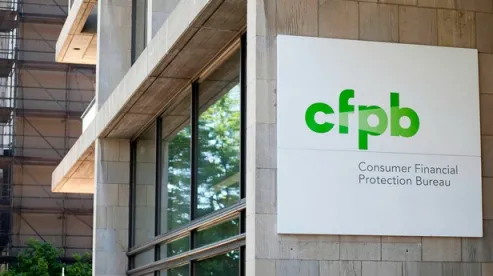Just two short months after the Consumer Financial Protection Bureau announced its COVID-19 mortgage servicing final rule, the effective date of August 31, 2021, is here. As we noted in our detailed breakdown of the final rule and corresponding webinar, the final rule poses new risks and challenges for mortgage servicers attempting to navigate the already complex COVID-19 landscape.
If you’re reading this post, you likely know that the new foreclosure “procedural safeguards” are arguably the most challenging aspect of the final rule. Over the past two months, we’ve spent a significant amount of time dissecting the safeguards and developing a detailed pre-foreclosure checklist to help our clients navigate the potential pitfalls associated with same. Because the feedback on the checklist has been so overwhelmingly positive, we wanted to take the opportunity to highlight a few of the potential compliance challenges we’ve identified along the way.
Recordkeeping
A threshold question many servicers continue to grapple with is whether they will take advantage of one or more of the procedural safeguards that allow servicers to start new foreclosures. As a quick refresher, the final rule generally prohibits starting new foreclosures prior to January 1, 2022, unless one of three procedural safeguards is satisfied. Notably, the final rule includes commentary explaining that, if a servicer makes the first notice or filing after satisfying a procedural safeguard, the servicer’s records must include evidence that the servicer satisfied the dual tracking rules in Regulation X and the applicable procedural safeguard. The commentary also suggests that the records should evidence compliance with each element of the applicable procedural safeguard that was satisfied.
This can be a difficult requirement for servicers to navigate. Assume, for example, that a servicer wishes to take advantage of the procedural safeguard allowing new foreclosure actions against unresponsive borrowers. As the commentary explains, to satisfy the requirements of the final rule the servicer would need to maintain records demonstrating, among other things, that the servicer did not receive any communications from the borrower during the relevant time periods. In other words, at least part of the servicer’s task is to prove a negative (i.e., that no contact occurred). The commentary notes that acceptable records in this instance may include: (1) call logs, servicing notes, and other systems of record cataloguing communications showing the absence of written or oral communication from the borrower during the relevant period; and (2) a schedule of all transactions credited or debited to the mortgage loan account, including any escrow account as defined in § 1024.17(b) and any suspense account as required by § 1024.38(c)(2)(i).
Will servicers have enough confidence in their servicing systems and records to take advantage of the safeguards? That remains to be seen, but many servicers understandably appear to be taking a cautious approach. Servicers that elect to proceed under a procedural safeguard should, at a minimum, add controls to their existing pre-foreclosure processes to ensure they’re maintaining the proper documentation.
Delinquent Borrowers
In what is undoubtedly a significant “win” for the industry, the procedural safeguards only apply to accounts that became more than 120 days delinquent on or after March 1, 2020. While this scope limitation may seem relatively straightforward at first, the requirement can be more difficult to operationalize than you might think. The most important thing to keep in mind is that the account must have been more than 120 days delinquent prior to March 1, 2020, to be considered out of scope. If the account became more than 120 days delinquent on or after March 1, 2020, a procedural safeguard must be satisfied. This generally means that the account must have been at least 121 days delinquent on February 29, 2020, to be considered out of scope.
This distinction between 120 days and 121 days has a tangible impact on the loans that a servicer considers eligible for foreclosure. In order to be at least 121 days past due on February 29, 2020, the loan must be due for October 31, 2019, or prior. Because most mortgage loans are due at the first of the month, the practical implication for most servicers is that the loan must be due for October 1, 2019, or earlier. If the loan is due for November 1, 2019, the loan would be 120 days delinquent February 29, 2020, and 121 days delinquent on March 1, 2020, meaning the procedural safeguard rules would apply.
Another potential pitfall occurs if an account was more than 120 days delinquent prior to March 1, 2020, but later a payment was made that reduced the delinquency. Not surprisingly, the rule does not provide express guidance in this scenario, but it’s worth noting that there is an argument under the definition of “delinquency” in Regulation X that loans with an existing due date on or after November 1, 2019, must satisfy a procedural safeguard, even if the account was more than 120 days delinquent prior to March 1, 2020.
Complete Application Safeguard
Under the complete application procedural safeguard, a servicer may generally proceed with the first notice or filing if the borrower (a) has submitted a complete loss mitigation application, (b) has gone through the entire loss mitigation process, and (c) is not performing on a loss mitigation option. Unfortunately, the final rule leaves several open questions for servicers that intend to rely on this safeguard.
First, the rule does not include a temporal aspect to the safeguard, so it is not abundantly clear whether an application received prior to the effective date of the rule, or even prior to the COVID-19 pandemic itself, would qualify. In the absence of any specific timing requirement the servicer is theoretically free to rely on any previously submitted complete application, but there may be some risk in relying on a loss mitigation evaluation that occurred well in the past, particularly if the investor’s loss mitigation requirements/options have been updated.
Second, the rule does not address how deficiencies in the loss mitigation review process affect the servicer’s ability to utilize the safeguard. For example, assume a servicer received and evaluated a complete application and denied the borrower for all options, but the evaluation letter sent to the borrower did not include the required appeal verbiage or perhaps was sent outside the 30-day required time period. Can a servicer rely on that application to satisfy the procedural safeguard? Or what if the evaluation notice contained a deficiency but the borrower later failed to perform under an agreed upon option? These are difficult questions that ultimately boil down to whether the servicer considers strict compliance with Regulation X’s existing loss mitigation requirements to be a prerequisite to the complete application procedural safeguard. Although strict compliance with these requirements arguably isn’t required, if a servicer intends to rely on an evaluation letter for purposes of satisfying this procedural safeguard, it would probably be prudent for the servicer to ensure the evaluation letter meets the requisite timing and content requirements.
Lastly, the rule does not address how to handle situations where the borrower has submitted multiple complete applications over the course of a single delinquency. While a servicer is generally only obligated to review the borrower’s first complete application, we know that many servicers will gratuitously review subsequent applications. In instances where there are multiple applications on file, do all applications need to meet the requirements of the procedural safeguard? Only the first application? Only the most recent? Generally speaking, the servicer need only identify one compliant loss mitigation evaluation to satisfy this procedural safeguard. Given the framework of the rule, it will often make sense for the servicer to start by reviewing the most recent application. However, if that application fails the procedural safeguard test, and depending on the reason for the fail, the servicer may be able to leverage previously submitted applications to satisfy the safeguard.
Conclusion
In sum, mortgage servicers that wish to take advantage of the CFPB’s new COVID-19 procedural safeguards will do so at their own risk, as the safeguards pose significant compliance challenges. As previously mentioned, we have spent considerable time over the last few weeks dissecting these safeguards and creating a pre-foreclosure checklist that mortgage servicers can use to ensure compliance with the same.






 />i
/>i

